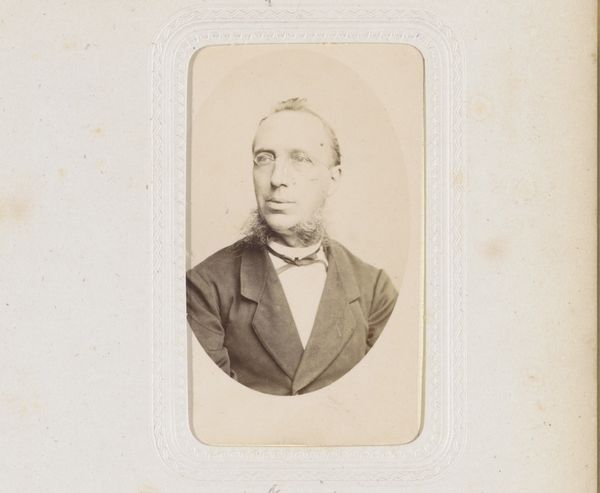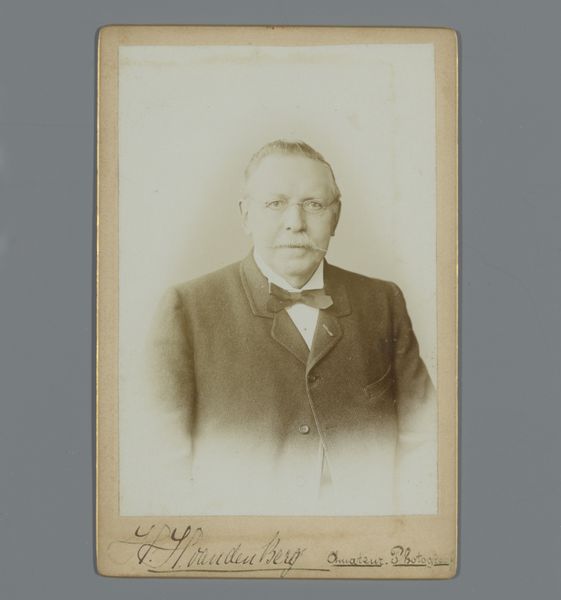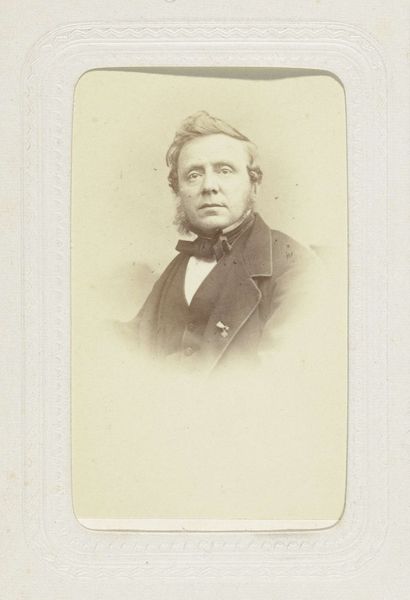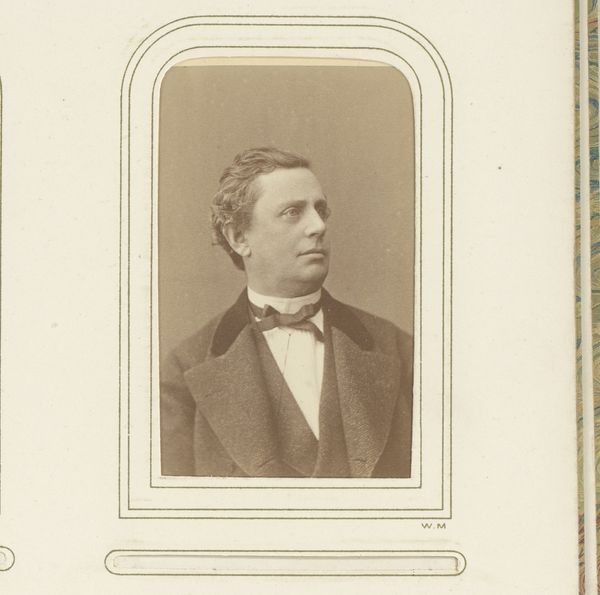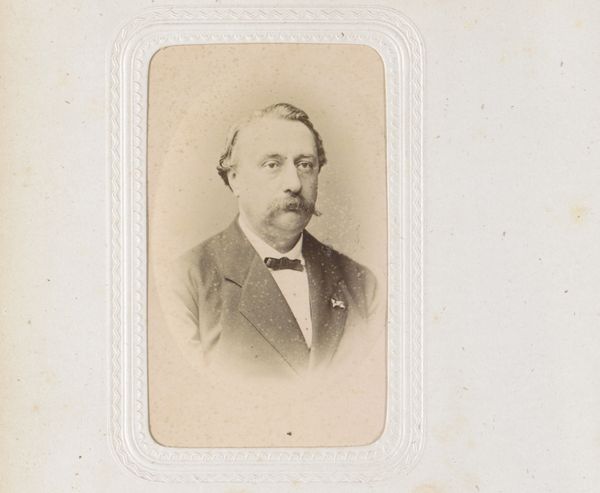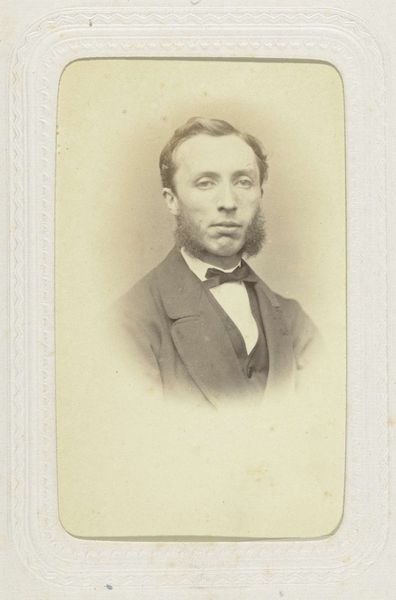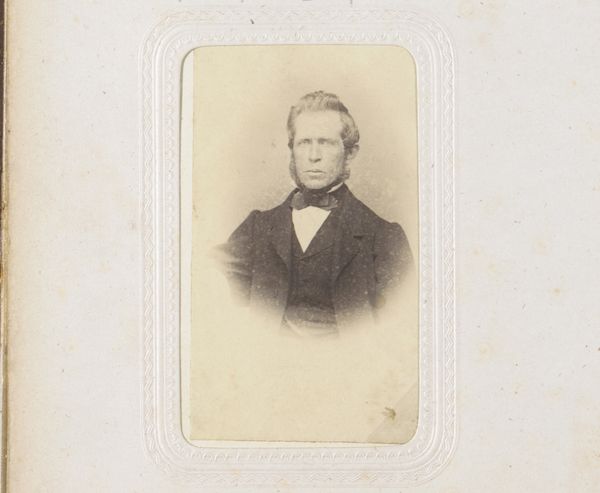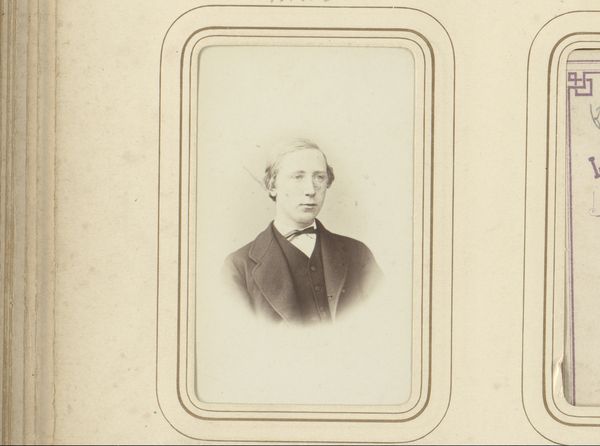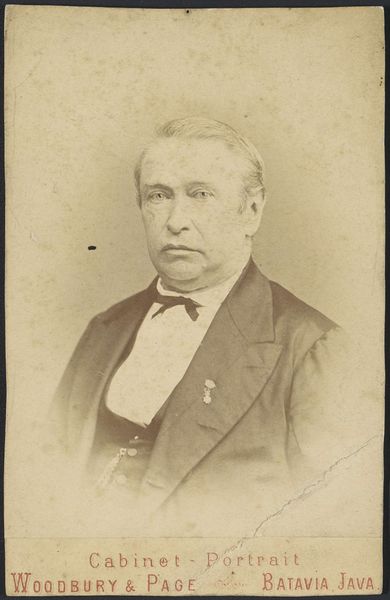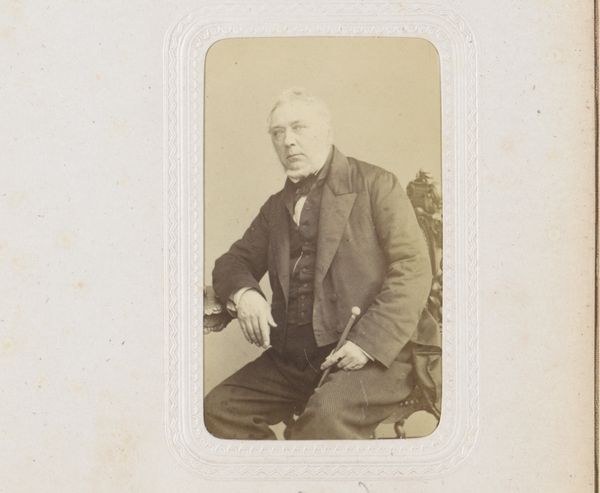
#
photo restoration
#
charcoal drawing
#
charcoal art
#
historical photography
#
portrait reference
#
pencil drawing
#
framed image
#
portrait drawing
#
tonal art
#
statue
Dimensions: height 82 mm, width 50 mm
Copyright: Rijks Museum: Open Domain
Curator: Let’s turn our attention to "Portret van Pieter Caland," created in 1876 by Maurits Verveer. Editor: My first thought is of the palpable texture and surface quality, especially within the tight constraints of the oval format. You can almost feel the layers of the photographic emulsion and the matte surface of the cardboard backing. It has this almost tangible materiality. Curator: Indeed, Verveer's mastery lies in capturing tonal variations using photography. Note how the sitter’s dark suit contrasts sharply with the softer lighting of his face. It almost imbues Caland with a sculptural presence, wouldn’t you agree? Editor: Perhaps. But that formal reading also highlights the social function of photography in that period—reproducing and distributing images as tools to solidify the bourgeoise identity. Look at the precision in rendering his garments—the starched collar, the neat bow tie—symbols of an emerging middle-class striving for status and recognition through representational art. The studio must have employed meticulous labor in the processes of staging and photographic development. Curator: An intriguing point. One might also appreciate how Verveer guides our focus through a sophisticated interplay of light and shadow—it moves from Caland's intense gaze to his carefully groomed facial hair, echoing similar features we find within classic paintings of that era, or even the early modernist period. Editor: And I'd emphasize the photographic process itself! Silver halide crystals meticulously exposed and developed on a treated surface – revealing the tangible and material realities of bourgeois identity through an evolving photographic industry. Curator: True; there's an undeniable tension, and interplay, between the represented subject and the very means of his representation, perfectly capturing this key point of modern industrial production. Editor: Exactly, from this material view, it’s clear that portraiture, like that of Pieter Caland’s, served as an efficient device. It reinforced the notions of progress through capital, material advancements and visible signs of distinction and recognition in modern industrialized societies. Curator: Yes, looking at the subtle light modulations across Caland's visage reminds me of the lasting visual languages in play within artistic expression; quite striking! Editor: Examining the photographic materials themselves, we see art deeply embedded in the processes of material and class-based cultural creation. A revealing combination of both image and method that the artist has skillfully deployed.
Comments
No comments
Be the first to comment and join the conversation on the ultimate creative platform.
